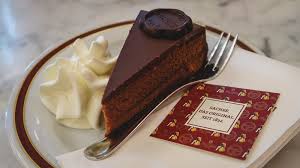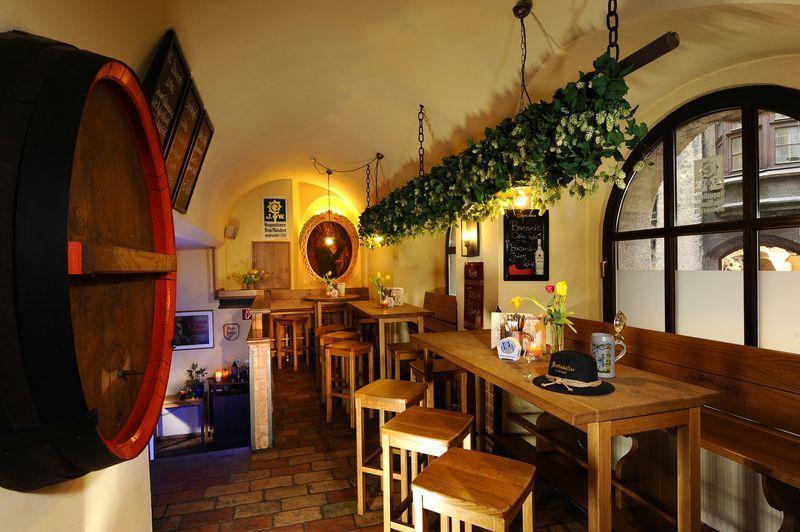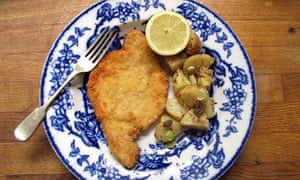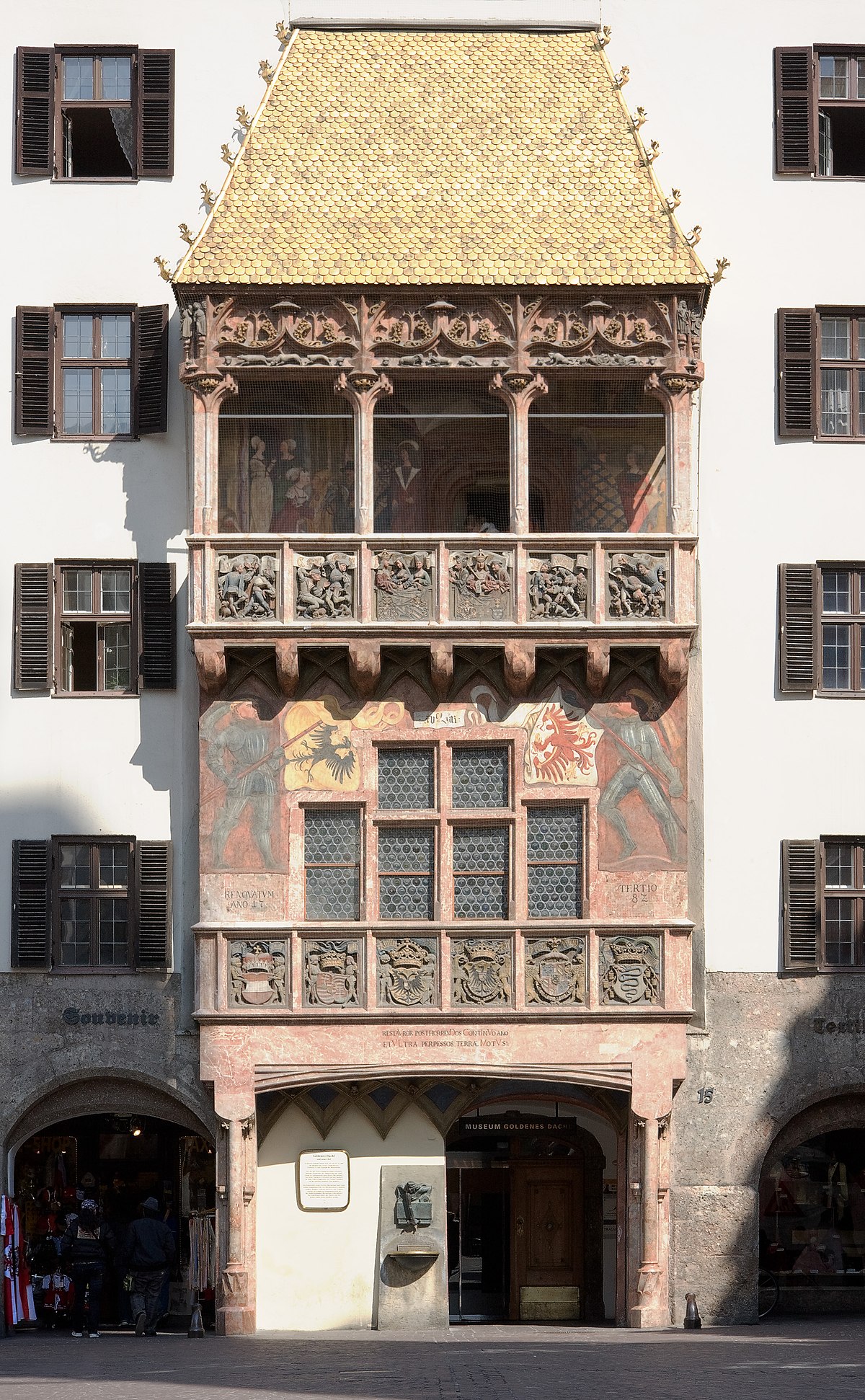Essen und Trinken
As we learned last week Austria is a nation that is well known for and prides itself on its tradition and culture. This tradition definitely extends to the topic of food and drink. Austria has many traditional dishes (some of which we'll learn about soon), much like the Italians they are also very particular about how these dishes are prepared.
National dishes
Wiener Schnitzel

The Wiener schnitzel is one of Austria's most famous and stereotypical dishes. It is a thin slice of breaded veal cooked in a pan with a shed load of butter and garnished with a slice of lemon and served with a side of either potato salad or chips (for the kids). It is so important in Austrian culture that by law if something is called a wiener schnitzel it has to be veal, unless otherwise clearly stated. There is a lot of contention about where it comes from but a popular belief is that it was first mentioned in a german cookbook back in 1831. For those wondering national Wiener Schnitzel day is September 9th.
Apfelstrudel

Apfelstrudle or apple strudel is probably the second most stereotypical of Austria's dishes, this time it's a pudding. It is made of a strudel pastry stuffed with grated apples, sugar, cinnamon and bread crumbs. I recently learned that there is apparently great debate of whether it should be served with raisins. I would say no, but I don't like raisins so that's no great surprise. It's then often served with ice cream or whipped cream placed on top.
Sachertorte

Sachertorte is probably Austria's second most famous pudding but better known worldwide (just not associated with Austria). The cake consists of a dense chocolate cake with a thin layer of apricot jam on top, coated in dark chocolate icing on the top and sides. It is traditionally served with unsweetened whipped cream
Recommendations

STIEFTKELLER, Innsbruck
For those of you in or around Innsbruck who want to experience an authentic test of Austrian cuisine, I can recommend giving Stieftkeller, in the center of town just around the corner from the Golden Roof, a try. In my (touristic) opinion they do a nice job of representing a potentially caricaturized traditional Austrian experience. They serve authentic food like the Wiener Schnitzel or Wiener Schnitzel vom Scwein (for those on a budget), Käsespätzle, Knöddel and most other typical Austrian dishes you can think of. You can then pair these dishes with the finest of Austrian beers and wines or if you're feeling like taking it easy you could always have a raddler or a spritzer, which are beer and lemonade and wine and lemonade respectively. If you don't want any alcohol you could also try an almdudler, which is Austria's most popular herbal lemonade. In fact after coca-cola it is Austria's second most popular soda.
Wiener Schnitzel Recipe
For this recipe you will need the following ingredients:
2 escalopes of veal
Salt, to season
Pepper, to season
2 eggs
2 tbsp double cream
Flour, to coat
50g dried white breadcrumbs
Vegetable oil, to fry
25g clarified butter or ghee
1 lemon, cut into wedges, to serve
Put one of the escalopes on a chopping board, cover with greaseproof paper, and beat out as thinly as you can without making holes in it. Season both sides well. Repeat with the other.
Beat the eggs lightly with the cream in a wide, shallow bowl. Put a good handful of flour on a plate, and tip the breadcrumbs on to another plate.
Heat 1/2cm oil in a deep, wide frying pan until a breadcrumb sizzles and quickly browns. While that's heating, dip the escalopes in turn in the flour, egg and lastly the breadcrumbs, making sure they're evenly covered with each layer, but being careful not to press them into the breadcrumbs too hard.
Add the butter to the pan and once foaming, drop in the escalopes (if they're too large, you may have to do them in batches). Cook until golden brown on the bottom, swirling the pan constantly to cascade oil over the top.
Turn over and repeat – once both sides are golden (a matter of minutes), the schnitzel are ready. Blot quickly with kitchen paper and then serve immediately with lemon to squeeze over.
 Ambras castle has always had a history closely linked to museums, Ferdinand II is thought to be the inventor of the first museum in Ambras, he would collect all sorts of things from armour and weapons to paintings and sculptures and would then put them on display to show to his guest who came to his castle. He also built one of the most important renaissance halls between 1569 and 1572. The picturesque layout of the 141ft long hall is dominated by the 27 full-length portraits of the princely rulers of the Tyrol
Ambras castle has always had a history closely linked to museums, Ferdinand II is thought to be the inventor of the first museum in Ambras, he would collect all sorts of things from armour and weapons to paintings and sculptures and would then put them on display to show to his guest who came to his castle. He also built one of the most important renaissance halls between 1569 and 1572. The picturesque layout of the 141ft long hall is dominated by the 27 full-length portraits of the princely rulers of the Tyrol Schloss Ambras is unique in that it has the only renaissance kunstkammer that can still be found in its original place. It is located in the chamber of arts and wonders. Many odd and interesting things can be found within, such as natural wonders (rare, unique and excellent things of nature) as well as precious objects, scientific items, toys, or luxury items of the time. There are also notable works of European art like the portrait of the hairy people or Vlad Dracula
Schloss Ambras is unique in that it has the only renaissance kunstkammer that can still be found in its original place. It is located in the chamber of arts and wonders. Many odd and interesting things can be found within, such as natural wonders (rare, unique and excellent things of nature) as well as precious objects, scientific items, toys, or luxury items of the time. There are also notable works of European art like the portrait of the hairy people or Vlad Dracula








